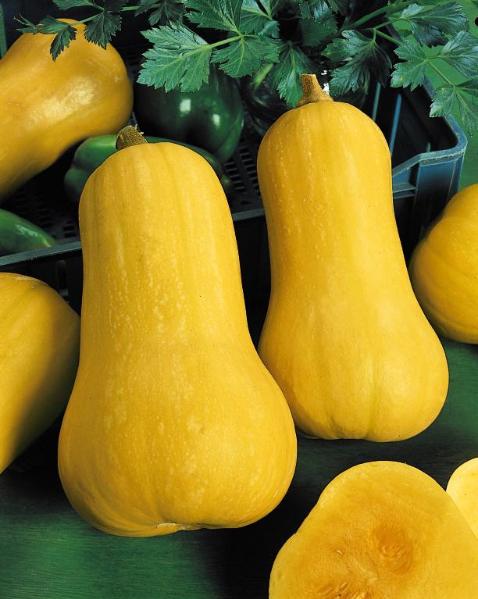Give Winter Squash Some Love
Winter Squash and How to Cook It
by Engrid Winslow
Now that the nip of fall is finally in the air it is time to celebrate the coming harvest of winter squash. Winter squash varieties include the beloved Butternut as well as Sweet Dumpling, Delicata, Spaghetti, Hubbard, Long Island Cheese, Pumpkins and so many more varieties. The squash should be harvested before the first hard freeze but a light frost will actually sweeten the sugars in the squash fruit. The stems should be fairly dry and the fruit unblemished. If there are any squishy spots, just eat those right away but the others can be stored for up to six months. The fruit should feel heavy and dense and your fingernail should not pierce the flesh when pressed against it. Cut the winter squash from the vine so that there is at least a 2” stem and then let them cure at room temperature for a week or two. After they have cured they should be stored in a cool dry place such as a basement or garage where they will not freeze.
Winter Squashes are rich in fiber and vitamins and low in calories but they are also so hearty that they are great for meatless meals. To my mind, the best way to eat most of them is roasted with olive oil, salt and pepper but let’s not forget pies and casseroles with warm winter spices like cinnamon and nutmeg. The seeds can also be roasted for a delicious and nutritious snack.
Many years ago this recipe for Butternut Squash Risotto in Cooks Illustrated Italian Favorites that I have tweaked and played with to come up with one of my most beloved recipes. It gets the center starring role at least once a month during the winter season for its comforting warmth. It seems like a lot of work but this is one that is worth every minute.
BUTTERNUT SQUASH RISOTTO
Serves 4-6
Adapted from Cooks Illustrated Italian Favorites 2009
2 TBL olive oil
6 TBL butter
2 LB butternut squash, peeled, de-seeded and cut into ½” cubes which should yield 3-4 cups
NOTE: Reserve seeds, fibers, peels and any extra bits of squash for use later
4 cups chicken stock
1 cup water
1-2 small onions, minced
2 cups Arborio (Carnaroli can be substituted)
1 ½ cups white wine such as Pinot Grigio that you will also drink with your dinner
1 cup grated Parmesano-Reggiano
2 cloves garlic, minced
2 TBL minced fresh sage leaves
¼ tsp grated nutmeg
Salt and pepper to taste
In a large non-stick skillet, sauté the squash over medium-high heat with olive oil until cubes are nicely browned. Season with salt and pepper, remove from pan and set aside. Add reserved squash peels, seeds, etc. to pan and cook, stirring to break up the fibers as much as possible until brown. Place chicken stock and water in a saucepan with reserved, cooked bits of squash, bring to a low boil and reduce heat to a bare simmer.
Place 4 tablespoons of butter in the empty skillet over medium heat and let melt before adding onion, garlic and additional salt and pepper. Cook and stir often until onions are softened. Add rice and stir until grains are a bit translucent around the edges (about 3-4 minutes). Add white wine and cook, stirring until it is fully absorbed. Add 3 cups of liquid (avoiding stems and other bits – Strain if desired but press the solids to get as much flavor from them as possible) and a half of the cubed squash to the pan. After the liquid is completely absorbed and the pan is nearly dry, continue adding liquid about 1/2 cup at a time, stirring constantly until liquid is absorbed before adding another ½ cup. Taste the rice for al dente and then stir in the rest of the squash, sage, nutmeg, parmesan and remaining 2 tablespoons of butter. Add additional liquid if you prefer a looser risotto and sprinkle additional parmesan on the top. Serve with the same white wine you used to cook your risotto.
You can add other things such as spinach, sweet peas and cooked chicken to this recipe if desired.




